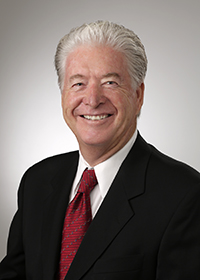
A clarion call went out to ERISA fiduciaries on June 9 when new fiduciary rule went into effect.
The Employee Retirement Income Security Act of 1974, or ERISA, protects the assets of millions of Americans so that funds placed in retirement plans during their working lives will be available when they retire. The IRS, Department of Labor, and ERISA regulate various compliance aspects of plans.
50 Million People Affected
The fiduciary rule affects over half of the country’s working population. Participation in 401(k) plans continues to grow with more than 50 million workers actively participating in more than 500,000 different company plans. The Investment Company Institute reports Americans hold nearly five trillion dollars in assets in 401(k) plans at the end of 2016.
The compliance stakes are high.
A look back at 2013 alone shows the DOL collected from plan sponsors $1.69 billion in fines, voluntary fiduciary corrections, and informal complaint resolutions, which represents 33 percent increase over the previous year.
Ignorance of the Law No Excuse
Many employers (plan sponsors) offering 401(k) plans do not realize they are personally liable for any compliance breach of their retirement plans. They may not even understand their fiduciary responsibilities because they assume service providers take care of this “administrative” detail.
That is a dangerous misconception.
Smaller plans with less than $50 million in assets face greater vulnerability because they may not understand the need for or role of designated fiduciaries. Unlike larger plans, smaller plans may not have in place elaborate compliance safety nets which protect larger plans. However, “ignorance of the law excuses no one” as the legal principle warns.
Most Common Breaches
Arguably, there are half a dozen or more common compliance issues over which employers stumble:
- Failure to understand eligibility requirements and enrollment timing
- Late transfer of paycheck withholdings to custodian accounts
- Absence of a plan committee to oversee performance and investment options
- Failure to follow the plan’s definition of eligible compensation
- Improper vesting of terminated participants and use of forfeited amounts
- Improper distributions to participants
Now, with the new fiduciary rule, employers not only have to worry about getting stuck in the weeds above, but they must also watch over the entire landscape.
In our last post, we discussed the new fiduciary rule and its requirement for advisors to act in the “best interest of clients.” This lifts the bar on the lower standard suitability followed by broker-dealers with the “potential for conflicted advice offerings” because they receive commissions on certain investment products.
Two Essential Questions
“Plan sponsors, in their capacity as fiduciaries, should know whether or not their advisors are fiduciaries and whether they have any conflicts of interest,” says Fred Reish, known as the industry’s go-to ERISA expert.
“If I were on a plan committee, I would ask the adviser for a written answer to those two questions,” he urges.
Remember, many broker plan providers still operate under the suitability standard, which does not protect you from plan liability. You must step up.
Is anyone reviewing plan communications to ensure compliance with the fiduciary rule? Are your plan providers recommending specific IRAs or investments to plan participants in their rollover actions? Both potential landmines.
What to Do Next
First, it is important plan sponsors review all relationships with investment advisors for their fiduciary status. If unclear, your litmus test is to secure a fiduciary pledge of assurance that they accept full investment responsibility for the plan.
Even so, as plan sponsor, you are still required to monitor their actions to ensure everything that could be done is being done in the best interest of the plan and your participants.
And, until January 1, 2018, you are in a bit of a twilight zone. That’s because one accountability part of the new fiduciary rule, called the Best Interest Contract Exemption (BICE), won’t be enforced until then. BICE permits employers to continue working with brokers who collect commissions if the broker agrees to act in a fiduciary capacity and disclose all forms of compensation.
Until then, the playing field remains gray as legal interpretation of key wording continues. Apparently, the new DOL fiduciary rule covers 1,000 pages.
Your best path is to undergo a fiduciary assessment now to know where you stand, what plan areas may be vulnerable, then act to avert possible hefty fines or burdensome litigation.
No doubt Fidelity, American Century, Franklin Templeton, Allianz, New York Life, and Cetera, to name a few in the financial sector alone, wish that had occurred before class-action suits made their way to the courts over their roles as plan sponsors.
Self-Correct with a Fiduciary Assessment
As a registered investment advisor and 3(21) fiduciary, Roush Investment Group invites you to consider a full fiduciary assessment of your 401(k) plan to ensure it is compliant and penalty-free. Some of the key areas we analyze during this process include:
- Overall plan governance
- Fee structure
- Plan documentation
- Investment policy and management
- Overall plan compliance
- Participant communication
- Annual plan review and reporting
Armed with this information and corrective recommendations, you will be able to self-correct and bring your plan up to date with new DOL and IRS requirements.
You cannot put a price on peace of mind.
To Your Financial Freedom,

Rick Roush AIF®, CPFA
Roush Investment Group
O: 559.579.1490 F: (559) 490-2015 C: (559) 285-3318



